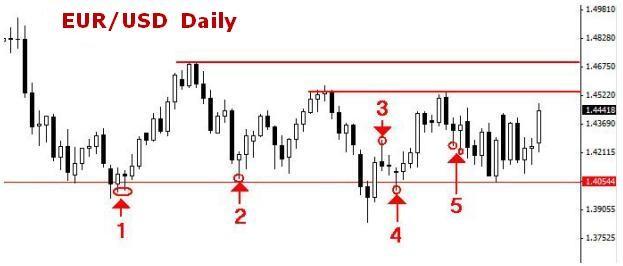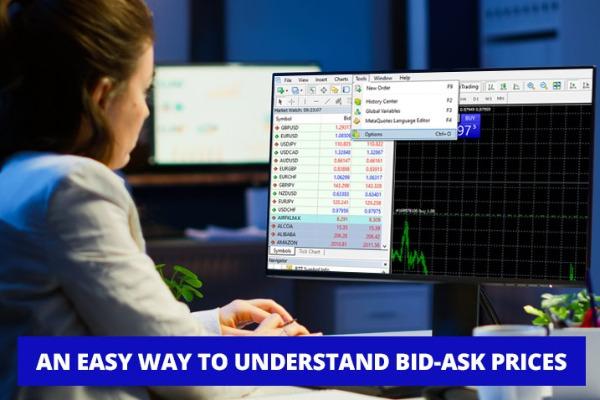Although mistake is inevitable, you can always lessen its probability. To that end, you should know what is overtrading and how to avoid it.
Overtrading is a common pitfall that many investors and traders fall into, particularly in the financial markets. It refers to excessive buying and selling of assets driven by emotions, impulsiveness, or an insatiable desire to make quick profits. While frequent trades and rapid gains may be tempting, overtrading can harm one's financial health and overall investment strategy.
That is why traders must be able to make a good plan outside of their trading hours. Once they pick the right strategy and hatch a good plan, they must execute the trade accordingly. This article will delve deeper into overtrading and its risks and provide valuable tips on avoiding it.
What Can Lead to Overtrading?
Overtrading is the act of trading too frequently, often without a clear plan or strategy. Even after putting a great effort into trade planning, traders are still at risk of overtrading if their emotions are unprepared to face market turmoils and unpredictability. Therefore, it will be a great help if they look into themselves and start changing their ways before everything is too late.
Here are several trading habits that can lead to overtrading:
- Opening Positions Based on Positive Correlations. If you buy EUR/USD and GBP/USD simultaneously because the pairs have a positive correlation, that means you have doubled your position, which means your risk is doubled as well. If the same price action setup is formed on both pairs, choose the one with greater validity. Suppose you want pair correlations to mitigate risks. In that case, it is better to open positions on different pairs with a negative correlation, such as EUR/USD and USD/CHF, provided that the price action setup is valid. Always choose the ones with lesser risks that align with your trading plan.
- Using High Leverage. High leverage may help you trade with a low margin, but that low margin is also why people tend to open a position carelessly. To avoid this, you must always conduct strict risk management.
- Overanalyzing the Market. The information excess from fundamental and technical indicators may tempt a trader to open more positions because it can make them feel like they know it all. Rather, a trader should learn how to filter the information to judge better.
Here is an example of how it can happen:
A trader originally planned to trade on a Daily chart, but he subconsciously deviated from his plan and changed the time frame to M15 so that he can find a signal much earlier. Little did he know that a different time frame requires a different strategy to work on. Thus, he loss more than he earn.
Another example:
A trader closes his deal on a profitable trade. Excited by his success, he recklessly entered the market again without a good planning, thorough analysis, or detailed assessment. He may earn another profit, but a chance for loss is just as great.
Both examples stem from the inability to control oneself and the ineptitude to keep the plan in motion.
How to Avoid Overtrading?
Now that you know what to avoid, let us take a look at how you can steer clear even further from overtrading:
1. Set a Goal
An old saying is that you should not bite more than you can chew. If you are really into forex trading, you should take this advice to heart. However, it does not mean you must eat one grain of rice at a time. What you need to do instead is set a realistic goal; not too low that it prohibits your growth, but not too high that it brings your equity to an untimely demise. Strike a balance between those two.
2. Utilize Price Action
Price action can help you prevent overtrading because it gives you good information regarding movements in the market. Based on that information, you should enter the market only when the price action setup is valid.
Here is an example of how to apply the price action method correctly:

- Arrow 1: points out to 2 Inside Bars formed near the support level. This setup is valid because that support level has been tested a few days prior. The confluence between the price action and the support level only adds more validity to the setup. Therefore, you can open a buy position with a good risk-to-reward ratio.
- Arrow 2: shows a bullish Pin Bar near the support level. Again, this signifies the support level's prominence so that you can open another buy position.
- Arrow 3: points to a bearish Pin Bar formed after a correction. Unlike the point shown by Arrow 1 and 2, this price bar is very close to the support level and therefore does not seem fit to open a sell position. A trader with good experience may not want to enter the market at that moment because opening a sell trade near a support level does not sound like a good idea.
- Arrow 4: points to another bullish Pin Bar near a significant support level so that this setup may open a buy position with a good risk-to-reward ratio.
- Arrow 5: shows 2 Pin Bars. Although the formation is correct, the validity of this setup is low because it does not confluence with other key signals like strong support or resistance. In other words, these Pin Bars are hanging by themselves. An expert trader would not want to enter the market at this moment.
The example above illustrates that price action methods can filter your trades. Inexperienced traders with no significant knowledge of price action analysis would likely overtrade by using all five signals, as pointed out by the arrows in the chart. However, traders with a good understanding of price action confirmation would only pick Arrow 1, 2, and 4 as the points where they enter positions.
3. Prepare A Plan for When Things Go South
There are times when forex market is very hard to predict, so you will need a plan when such a thing happens. You must limit your risk tolerance based on your balance and be strict about it. A trader can't make consistent profit if he cannot follow his plan.
4. Take A Break
A healthy state of mind plays an important part in your trading success. If your mind happens to be worn down, take a good rest by doing whatever you like. Sip a nice cup of warm coffee, admire your collection of small robotic figures, or pet a furry feline companion should do the job.
5. Evaluate Yourself
Were you going for vengeance for your losses? Or had your profit induced a sudden urge of excitement to enter the market repeatedly? Once you figure out that you were indeed guilty of those acts, you should know better than to avoid them in the future. Writing down a trading journal can help you see if you have deviated from your plan or may need to revise it.
6. Act Like A Pro
Once you have all the things above identified, it is time to sort everything out and get back on your feet. Traders with great potential do not despair endlessly after a loss; they make a better plan instead. You should do that too. By following this suggestion, you would make a pro-trader move.
See Also:
Overtrading is one of many problems that traders must solve in this business. If you can persevere and handle every difficulty with proper manners, you will eventually reach the pinnacle. More inspirations about building a career in successful forex trading can be found in "If Trading Success is a Journey, Where Do We Start?"

 Dedicated FREE FOREX VPS
Dedicated FREE FOREX VPS Free FOREX Virtual Private Server
Free FOREX Virtual Private Server MT4 Demo Contest, Get $500
MT4 Demo Contest, Get $500 Sign Up for an Account, Claim 60% Deposit Bonus
Sign Up for an Account, Claim 60% Deposit Bonus Free MT4/MT5 VPS 2024
Free MT4/MT5 VPS 2024 Send E-mail and Get Free Merchandise
Send E-mail and Get Free Merchandise $1K Refer a Friend Bonus for Pepperstone Pro clients
$1K Refer a Friend Bonus for Pepperstone Pro clients Maximize Your Earnings with 100% Deposit bonus
Maximize Your Earnings with 100% Deposit bonus Trade to Win, $5,000 Monthly Demo Contest
Trade to Win, $5,000 Monthly Demo Contest Claim 30% + 15% Deposit Bonus from LiteFinance
Claim 30% + 15% Deposit Bonus from LiteFinance











